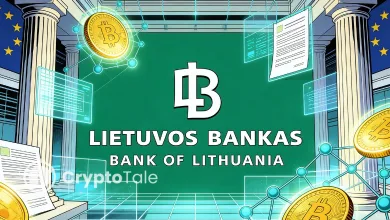Ethereum Base Confirms Non-Custodial Security and User Control

- Buterin said Base cannot seize assets since Ethereum contracts control user funds.
- Base’s Jesse explained sequencers order transactions, but cannot decide trade outcomes.
- Soneium failed censorship showed Ethereum enforces resistance through forced transactions.
Ethereum co-founder Vitalik Buterin has clarified the security foundation of Coinbase’s Layer 2 network Base, emphasizing its non-custodial design. Speaking recently on the X platform, Buterin explained that while Base uses centralized features to enhance user experience, it cannot take custody of funds. He stressed that Ethereum’s Layer 1 contracts hold ultimate authority, ensuring withdrawals are possible even if Base ceases operations.
Base’s Role and User Protection
According to Buterin, Base follows Ethereum’s security principles while providing faster and cheaper transactions. He explained that Base does not hold user funds, aligning with definitions tracked by L2beat, an independent analytics site.
These standards confirm that operators cannot seize or block user assets, protecting individuals from being rugged by intermediaries. To illustrate this protection, Buterin highlighted the role of Ethereum’s smart contracts.
These contracts guarantee that all funds remain under Layer 1 control, independent of Base’s operational choices. If Base were to shut down, users could directly reclaim assets through Ethereum, bypassing any operator involvement. This outlook separates operational convenience from custodial risk, a distinction Buterin said many have misunderstood.
His remarks came in response to ongoing debates around Layer 2 security, particularly criticism suggesting that sequencers or operators function like custodians. Buterin maintained that L2s are extensions of Ethereum rather than servers with discretionary control.
Related: What is Layer 2 Blockchain & Why is it Important?
Sequencers Explained by the Coinbase Team
Jesse, a builder on Base, provided additional clarification on sequencer functions. He explained that the role of a sequencer is to sequence user transactions and batch them for settlement on Layer 1 of Ethereum. They are settled in a first-in, first-out manner to offer uniform ordering and greater throughput.
Jesse noted that users are not restricted to sequencers for participation. At any time, they can bypass the sequencer and submit transactions directly through Ethereum validators. This design preserves Ethereum’s decentralization and censorship resistance within Base.
He further distinguished sequencers from traditional matching engines. While exchanges match buy and sell orders at specific prices, sequencers only manage transaction orders. Execution logic is coded into decentralized applications like automated market makers or decentralized exchanges. This means sequencing cannot control trading outcomes or user balances.
Proven Safeguards Against Shutdowns
Buterin also referenced safeguards built into existing Layer 2 platforms. He pointed to “escape hatches,” mechanisms already deployed on systems like StarkEx, which powers dYdX. These fallback processes allow users to withdraw funds directly from Ethereum through a series of transactions, even if an L2 halts operations.
The process involves submitting Ethereum transactions with proofs that confirm asset states, enabling withdrawals without operator approval. According to L2beat, tools have been developed to simplify these steps for non-technical users. Such safeguards show that non-custodial principles are enforceable through code rather than dependent on operator trust.
Another example is from Soneium, Sony’s Layer 2 built on OP Stack. In January, Soneium attempted to block transactions involving unapproved tokens. Within 24 hours, users bypassed the censorship by forcing transactions directly through Ethereum. This proved the censorship resistance inherent to OP Stack, showing that L2 operators cannot override Ethereum’s final authority.
These cases support how Ethereum enforces user protection across its scaling solutions. Buterin stressed that the core message is not about ideology but about concrete safeguards that prevent theft and ensure accessibility.
Meanwhile, Base’s structure shows how Layer 2 networks combine operational efficiency with Ethereum’s non-custodial guarantees. Sequencers improve transaction flow but do not hold or control funds.
Examples from StarkEx and Soneium confirm that users can bypass operators, withdraw assets, and resist censorship through Ethereum’s contract logic. These safeguards demonstrate user protection and Ethereum’s strength.




